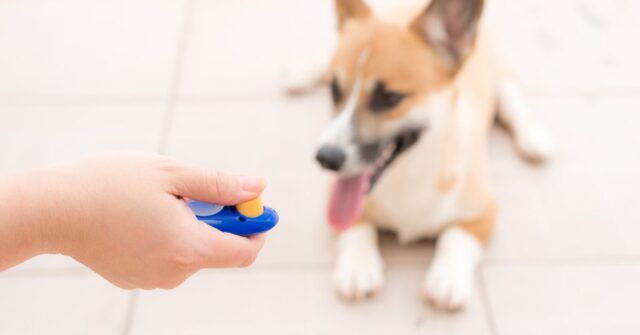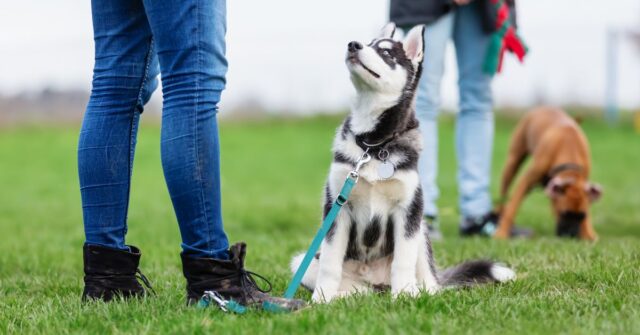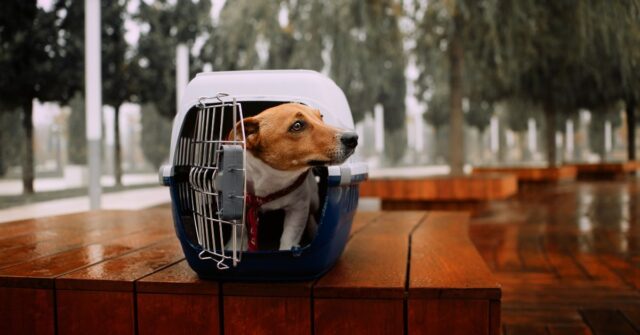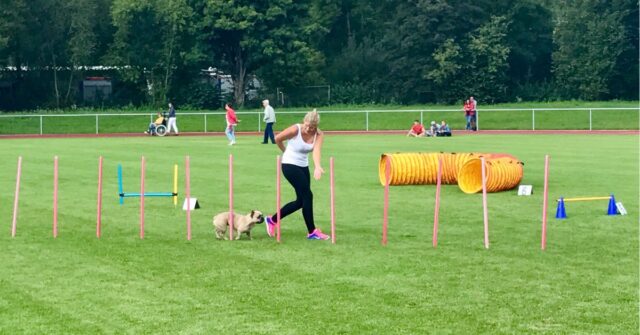Welcome to the ultimate guide on puppy training, tailored specifically for Australian dog owners.
In this comprehensive blog post, you’ll find everything you need to know about training your new furry family member, from day one to advanced techniques.
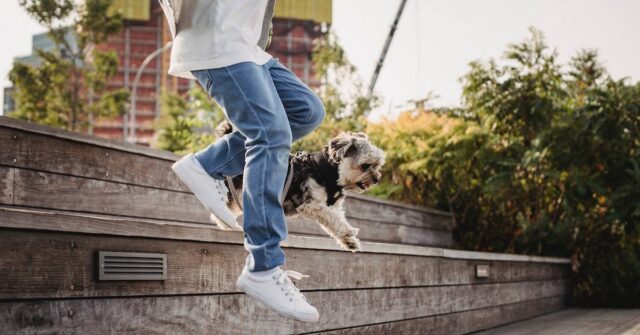
Introduction: The Importance of Puppy Training
Training a puppy is a responsibility that every pet owner must take seriously. Why? Because it lays the foundation for a happy, healthy relationship between you and your dog.
Understanding how to communicate with your puppy will help you prevent a variety of problems down the line, from excessive barking to unwanted chewing and more.
Why Training Your Puppy Matters
Training your puppy is about much more than teaching a few tricks; it’s about establishing a lifetime of good behaviour, socialisation, and mutual respect.
Proper training ensures that your puppy will grow into a well-adjusted adult dog that is a joy to have around the home and in public places.
Understanding Puppy Behaviour
Puppies are curious, energetic, and eager to please—traits that make them both delightful and challenging.
Understanding the motivations behind your puppy’s behaviours can help you tailor your training approach to be most effective, building a stronger bond between you and your new pet.
Getting Started: What You Need
Before you begin the training process, there are a few essential items you’ll need to get started. Having the right tools can make a world of difference in how effective your training sessions are.
Essential Training Supplies
Some basic training supplies you’ll need include a collar, a leash, training treats, and toys. The collar should be comfortable but secure, and the leash should be sturdy.
Training treats should be small and easy to dispense quickly. Toys can be used both as a reward and a way to redirect unwanted behaviours.

Creating a Puppy-Friendly Environment
Before bringing your puppy home, make sure you’ve puppy-proofed your home by securing dangerous items and creating a safe space for your new pet.
Consider designating a particular area in your home where the puppy can eat, sleep, and play.
The First 48 Hours: Setting the Tone
The first 48 hours are crucial in establishing a positive relationship with your puppy. This is when your puppy will start to learn about its new environment and what is expected from them.
Introduction to the New Home
Upon arrival, give your puppy a tour of their new home. Allow them to sniff around and explore their surroundings. This will help them feel more comfortable and secure in their new environment.
Meeting Family Members and Other Pets
Introductions should be done slowly and calmly. Allow your puppy to meet each family member one at a time, and observe how they interact with other pets.
This will set the stage for future interactions and relationships within the household.
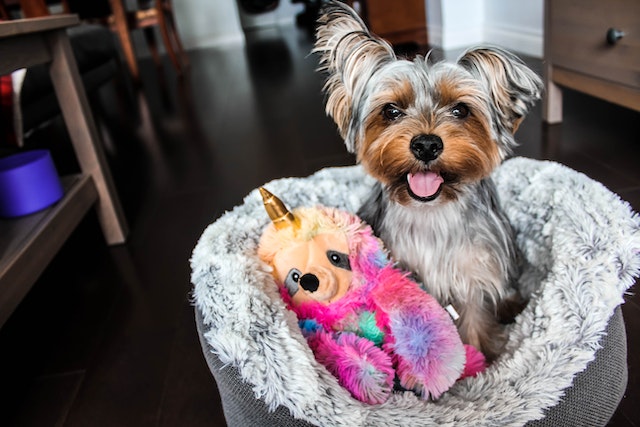
Socialisation: The Aussie Way
Socialisation is a critical part of any dog’s development, and in Australia, there are plenty of opportunities to do it right.
Whether it’s at the beach, dog parks, or social events, ensuring that your puppy is well-socialised will pay dividends in their behaviour and temperament.
Why Socialisation is Crucial
Socialisation exposes your puppy to various people, animals, environments, and experiences. The more diverse experiences your puppy has, the more adaptable and well-adjusted they will be as an adult dog.
Tips for Safe Socialisation
Start by exposing your puppy to different environments slowly. Begin with short visits to quiet parks, gradually working your way up to busier locations.
Always keep your puppy on a leash and be mindful of their reactions to new experiences.
Australian Dog Parks and Beaches
Did you know that Australia is home to some of the world’s most beautiful dog-friendly beaches and parks?
Places like Sydney’s Eastern Suburbs offer plenty of spots where you can let your puppy play and interact with other dogs, making the socialisation process a walk in the park—literally.
Basic Commands: The Foundation
Basic commands are the cornerstone of any good training program. These foundational commands will make your life easier and keep your puppy safe.
But remember, training should always be a fun and positive experience for both you and your puppy.
The Importance of Consistency
Consistency is key when it comes to training. Always use the same words for commands and reward your puppy immediately after they perform the correct action.
This helps them associate the command with the action and the reward, making training more effective.
Sit, Stay, and Come: The Essentials
The basic commands “Sit,” “Stay,” and “Come” are the essentials every dog should know.
Start by teaching “Sit” as it is generally the easiest for puppies to learn. Once your puppy has mastered this command, you can move on to “Stay” and then “Come.”
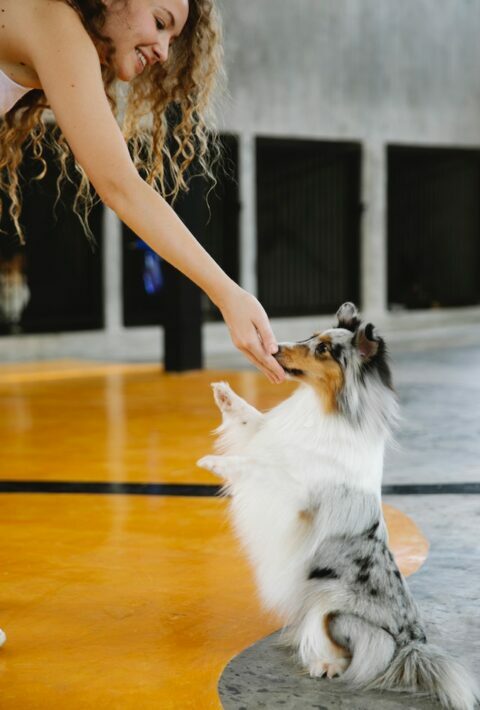
Leash Training
Leash training is crucial for controlling your dog in public places and ensuring their safety.
Start by letting your puppy wear the leash around the house, then progress to short walks, gradually increasing the distance as they become more comfortable.
House Training: Beyond the Basics
Once your puppy has the basic commands down, it’s time to focus on house training. This involves teaching them where to go potty, how to behave during meals, and setting boundaries inside the house.
Potty Training Tips
Potty training can be a challenging but necessary part of raising a puppy. Start by taking your puppy outside frequently, especially after meals or when they wake up.
Use a keyword like “potty” to help them associate the action with the command.
Mealtime Training
Mealtime is an excellent opportunity for training. Have your puppy sit before placing the food bowl down, teaching them patience and impulse control. Be consistent with feeding times to help establish a routine.
Teaching Boundaries Inside the House
Setting boundaries is important for creating a harmonious living environment.
Use baby gates or playpens to restrict your puppy’s access to certain areas of the house, and be consistent in enforcing these boundaries.
Behavioural Training: Tackling Issues Head-On
No dog is perfect, and behavioural issues are a common part of the puppy phase. The key is to address these issues head-on through training.
Addressing Excessive Barking
Excessive barking can be both annoying and problematic. The first step in solving this issue is identifying the cause—whether it’s boredom, attention-seeking, or a response to environmental noises.
Once identified, you can work on a training solution tailored to your puppy’s needs.
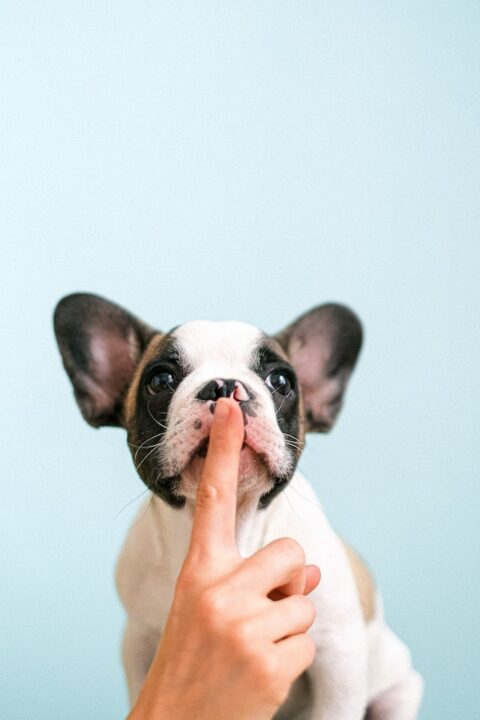
Preventing Destructive Chewing
Chewing is a natural behaviour for puppies but can become problematic if not managed properly. Provide appropriate chew toys and use deterrent sprays on furniture and other objects you want to protect.
Managing Separation Anxiety
Separation anxiety is common among puppies and can result in destructive behaviour when left alone. To prevent this, practice short departures, gradually increasing the time you are away.
Reward calm behaviour and consider using puzzle toys to keep your puppy occupied.
The Power of Positive Reinforcement
Positive reinforcement is a proven method that utilises rewards to encourage good behaviour. This technique is highly effective and strengthens the bond between you and your puppy.
What is Positive Reinforcement?
Positive reinforcement involves rewarding desired behaviours with treats, toys, or affection. This helps your puppy understand that good things happen when they follow commands or exhibit good behaviour.
Benefits of Reward-Based Training
Reward-based training not only helps with command recall but also promotes a happy and confident dog. This is especially crucial for puppies as it sets the tone for future interactions and training sessions.

Common Mistakes to Avoid
Even experienced dog owners can make mistakes during the training process. Awareness of these common pitfalls can help you avoid them.
Being Inconsistent
Inconsistency in commands or rewards can confuse your puppy and slow down the training process. Make sure everyone in the household is on the same page regarding training techniques and commands.
Ignoring Bad Behaviour
Ignoring bad behaviour can be as detrimental as rewarding it. Address undesirable actions immediately to prevent them from becoming ingrained habits.
Overcomplicating Commands
Keep your commands simple and clear. Complex or multiple-word commands can confuse your puppy, making training more difficult.
Special Considerations for Australian Breeds
Some breeds are unique to Australia and may require specific training considerations. Understanding the characteristics of these breeds can help you tailor your training approach.
Training the Australian Cattle Dog
The Australian Cattle Dog is a highly intelligent and energetic breed. They require both mental and physical stimulation, making them ideal candidates for advanced obedience and agility training.
Understanding the Australian Terrier
The Australian Terrier is a small, feisty dog with a strong prey drive. Focus on socialisation and obedience training to mitigate any aggressive tendencies.
Tips for the Kelpie and Other Working Dogs
Kelpies are renowned for their intelligence and agility. They are quick learners but require constant mental and physical stimulation to prevent boredom and associated behavioural issues.
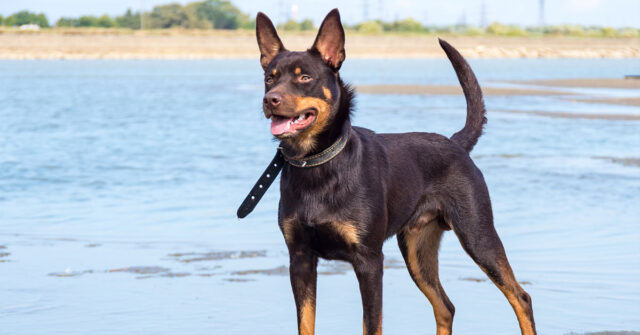
Advanced Training and Further Education
Once your puppy has mastered the basics, you might consider enrolling them in advanced training classes.
This can include anything from agility training to obedience trials, and even dog sports that are popular in Australia.
Agility Training
Agility training is a fun and challenging way to engage your dog’s mind and body. It involves navigating through a course of obstacles, showcasing your dog’s obedience and agility.
Obedience Trials
Obedience trials offer a formal setting where your dog’s training can be evaluated. It’s an excellent way to showcase your training efforts while competing for titles and awards.
Dog Sports Popular in Australia
From herding trials to flyball, Australia offers a wide range of dog sports that can enrich your dog’s life and deepen your bond. These activities offer great opportunities for socialisation and mental stimulation.
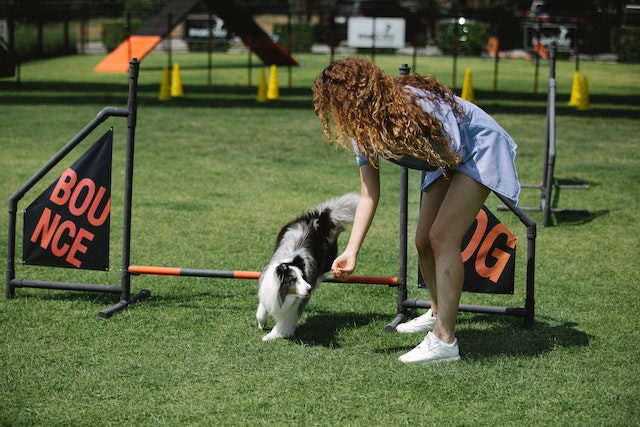
Choosing a Professional Trainer
Sometimes, despite our best efforts, we may need to seek the help of a professional. If you find yourself in this situation, it’s important to know how to choose the right trainer for your puppy.
When to Seek Professional Help
If your puppy is displaying persistent behavioural issues, or if you’re having trouble establishing basic commands, it may be time to consult a professional trainer.
How to Choose the Right Trainer
Look for trainers who use positive reinforcement techniques and are accredited by reputable organisations.
Ask for references and observe a training session if possible before making your final decision.
Final Thoughts and Resources
We hope this comprehensive guide has given you all the information you need to train your new puppy successfully.
Training a puppy requires patience, consistency, and love, but the rewards are well worth the effort.
Useful Books and Online Resources
For those looking to dive even deeper into the topic, there are several books and online courses available that cover everything from basic to advanced training techniques.
Australian Veterinary Associations and Support
If you have medical or behavioural concerns that are beyond the scope of this guide, consult your local vet or look for resources from reputable Australian veterinary associations for expert advice.








